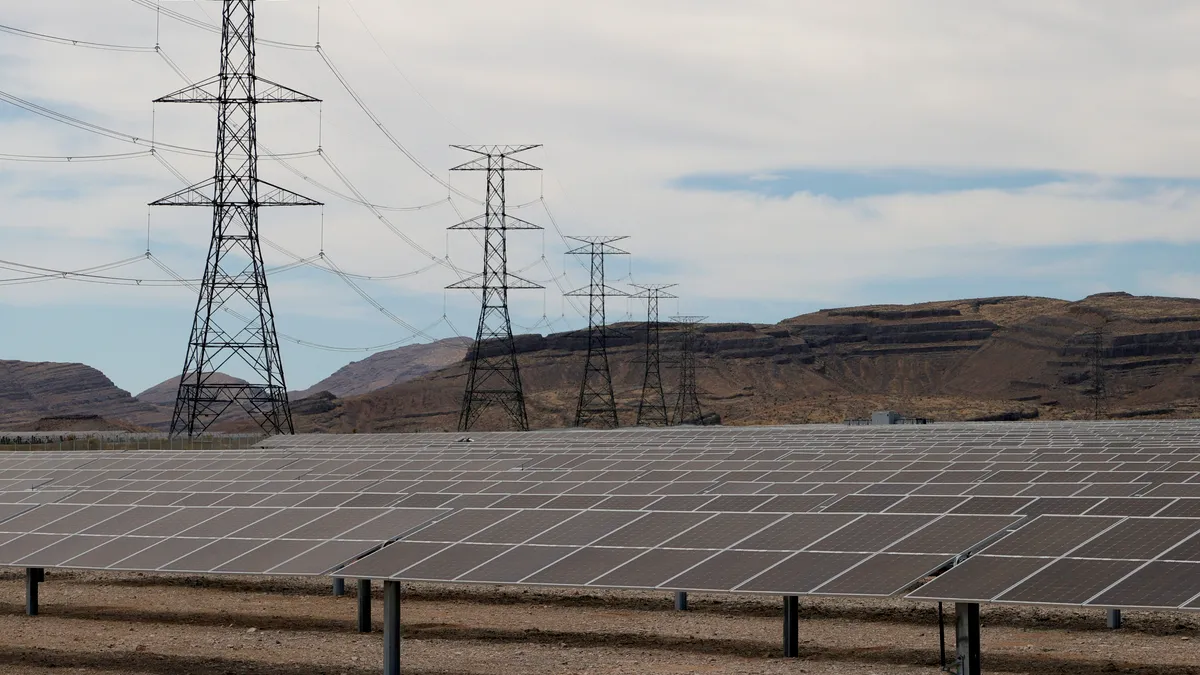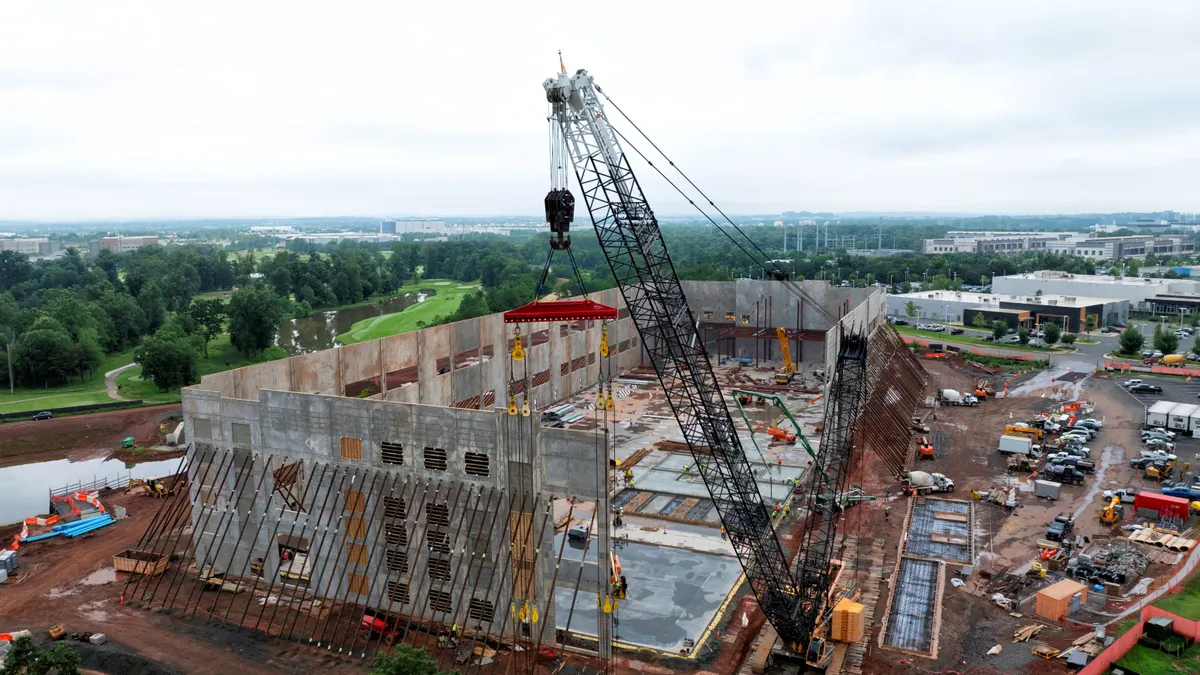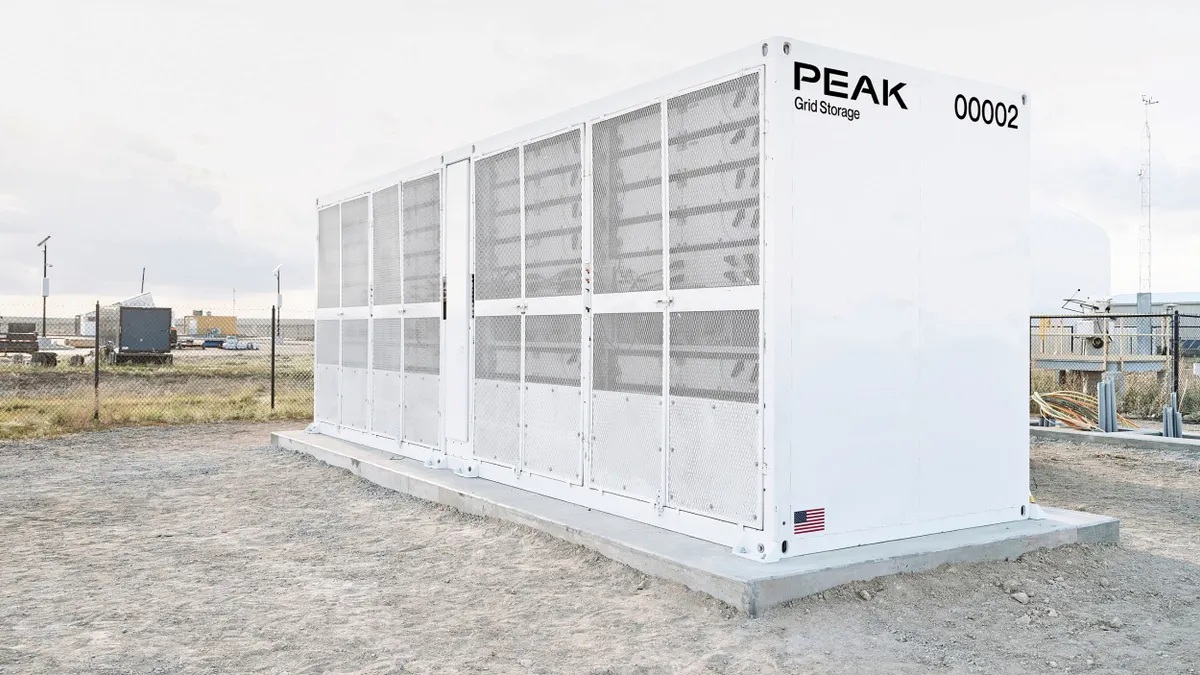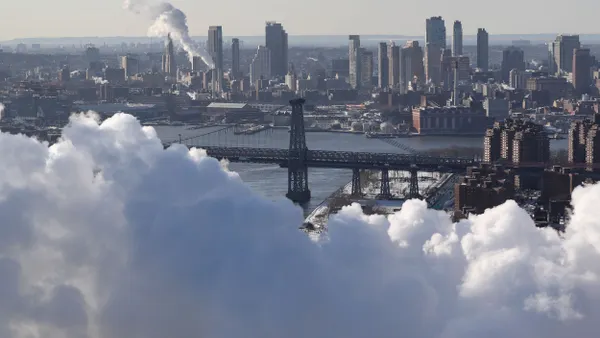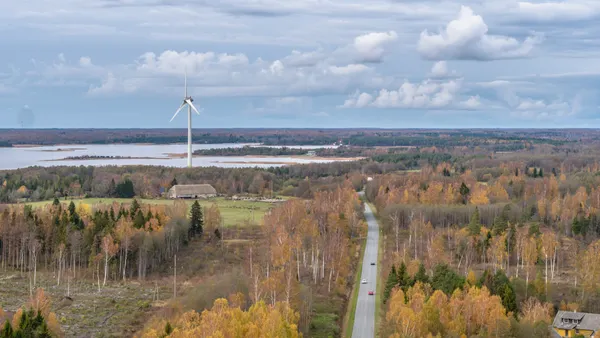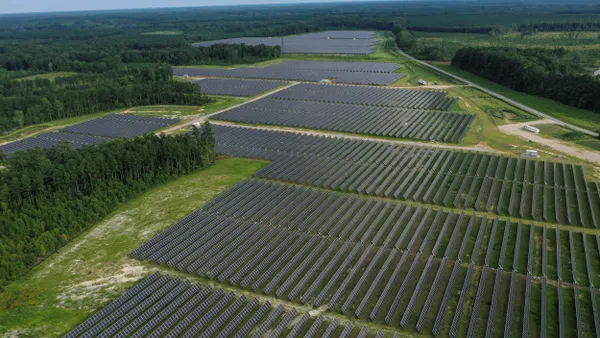Dive Brief:
- The U.S. could deploy between 51 GW and 84 GW of renewable energy projects on federal land by 2035, generating up to 10% of the clean energy needed to reach net zero emissions, according to a Tuesday report from the Department of Energy’s National Renewable Energy Laboratory.
- The study found that federal lands could support up to 7.7 TW of renewable capacity in total. The 51 GW to 84 GW total comes from “central scenarios that prioritize meeting America’s growing energy demand while balancing other needs such as natural resource protection,” DOE said in a release.
- Also on Tuesday, the Bureau of Land Management issued a notice rejecting appeals from the governors of California and Utah to alter the updated Western Solar Plan, which was finalized in December.
Dive Insight:
“Only 4% of operating utility-scale land-based renewable energy capacity — solar PV, land-based wind, and geothermal — in the contiguous United States is currently located on federal lands,” said NREL in a release. “For comparison, about 12% of oil drilling in the contiguous United States is on federal lands and the share of total natural gas production on federal lands is similar.”
NREL found “technical potential for 5,750 GW of utility PV on 44 million acres of developable federal land, 875 GW of land-based wind on 43 million acres, 130 GW of hydrothermal on 12 million acres, and 975 GW of enhanced geothermal on 27 million acres.”
Researchers modeled seven scenarios for renewables deployment. In most, federal land use would range from 325,000 acres to 2 million acres by 2035, which equates to less than 0.5% of all federal land area and less than 5% of developable federal lands, according to the report.
“Of the 2 million acres that would be needed to meet 2035 demand, less than 815,000 acres or 0.2% of all federal lands would be permanently disturbed,” NREL said.
The report was completed with input from the Bureau of Land Management, the U.S. Fish and Wildlife Service, the U.S. Forest Service, the U.S. Department of Defense, and DOE – “each of which have varying priorities for managing their lands to achieve agency missions,” DOE said.
“NREL’s modeling aligns with recent federal progress on supporting efficient and environmentally responsible renewable energy planning and permitting, including the Bureau of Land Management’s updated Western Solar Plan,” DOE said.
BLM’s updated Western Solar Plan was finalized Dec. 20, and alters the 2012 Western Solar Plan to include Idaho, Montana, Oregon, Washington and Wyoming — in addition to the originally included states of Arizona, California, Colorado, Nevada, New Mexico and Utah.
The updated plan also “uses lessons learned and best practices to guide a strategy for the West — identifying lands near transmission lines and previously disturbed lands as available while excluding sensitive areas like specially protected lands, lands containing important cultural resources, and critical wildlife habitat,” BLM said.
BLM’s Principal Deputy Director Nada Wolff Culver wrote the agency’s Tuesday response to the governors seeking alterations to the updated plan, which concluded that no changes to the plan were necessary as the governors’ appeals did not “identify inconsistencies with any approved or adopted State or local plans, policies, or programs [or] provide for a reasonable balance between the State’s interest and the national interest.”
California Gov. Gavin Newsom, D, had raised concerns about certain transmission upgrades becoming stranded assets as the California Public Utilities Commission had completed its integrated resource planning process under an assumption of land availability in southern Nevada consistent with the 2012 Western Solar Plan. Culver responded that the potential impacts remain speculative.
Newsom also recommended that BLM “protect habitat through the consultation process under Section 7 of the Endangered Species Act on an individual project basis,” Culver said.
“The BLM agrees that Section 7 consultation will be required on a project-specific basis, but there is a Federal interest — and obligation under the Endangered Species Act — to consider impacts to species at the planning level,” Culver said.
Utah Gov. Spencer Cox, R, had expressed concerns about conflicts between solar and geothermal energy development, solar and livestock grazing, and the amount of land earmarked for the plan.
Culver responded that the BLM will approach potential conflicts on a case-by-case basis and that “the BLM is proposing to identify an appropriate number of acres of public lands as available, both in Utah and the broader planning area for this effort.”



